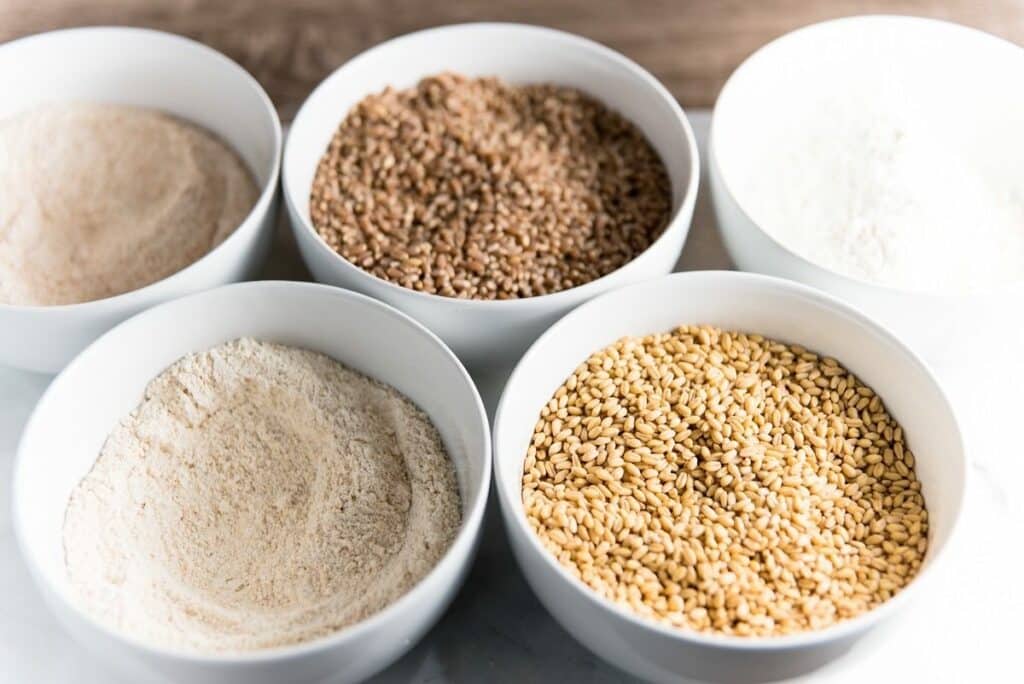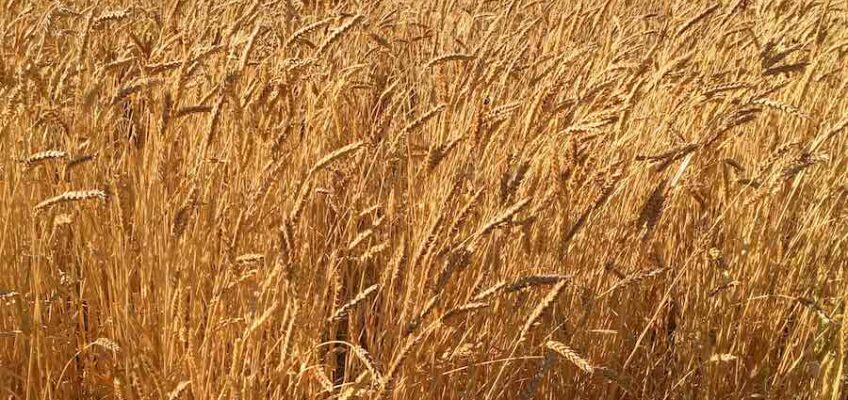“This is the best cookie/croissant/sourdough I’ve ever had” is the most common phrase uttered in our baking classes. Our secret weapons? Sonora, Spelt, Hard White, and Rye are the rainbow of whole grain flours in our arsenal.
Our goal as bakers is to delight and comfort you with flaky croissants, chocolate-studded cookies, and tender slices of cake. Texture and flavor are at the heart of your experience, which is why working with the additional flavors that whole wheat flours bring is so exciting. White flours are inexpensive, consistent, and have a long shelf life; they are a great ad for industrial, shelf-stable muffins but disappointingly bland. If you’ve ever been disheartened by a dry whole-grain scone or lackluster bran muffin, read on:

White flour, the white starchy inside of a wheat berry, is what’s left over after sifting out the flavorful bran and nutritious germ and though quite reliable, have no flavor. White flours include the all-purpose, bread and cake flours sold at eye level at your grocer. Bread and all-purpose flours are milled and sifted from hard wheats and cake and pastry flours from softer wheats, but you’re only playing with two or three varieties when purchasing white flour. There are thousands of varieties of wheat, each with their own flavor profiles and strengths when left whole. What we’re missing from these refined flours is a rainbow of flavors and nutrients, lost to industrialization and the desire for consistency and longer shelf life.
Walk through a field of wheat in early spring and you’ll see green shoots of various heights, their stalks and developing seeds reaching towards the sun. These seeds, soft and starchy in their infancy, will mature and dry by end of summer into endless fields of golden wheat. This grain is harvested in the late summer and early fall, cleaned and stored away until ready to be milled into flour. Large mills will grind the wheat with stainless steel rollers, separating the starchy inside (your white flour) from the flaky flavor-packed bran and tiny, nutritious germ. The white starch becomes anything from all-purpose to cake flour, the oily germ removed to lengthen shelf life and bran sold off to feed suppliers. Smaller mills will use traditional stones to mill the wheat, and the best millers will leave this entirely whole grain flour intact.
But back to that dry scone. The secret to packing all the flavors of whole wheat flour and keeping the fluffy texture of a cinnamon roll and the ooey-gooey center to your chocolate chip cookie is hydration. Bran, that outside seed coating that keeps the baby germ safe from harm, comes in many colors, flavors and ratios. Long, thin grains like Rye have little starch and loads of grassy-flavored bran, while soft and starchy wheats like Sonora have a nutty, buttery aroma and flavor. Bran flakes are very thirsty and will rob your doughs and batters from their moisture, leaving you with the possibility of cardboard cookies without a few tweaks. The solution? Nan Kohler, owner of our local mill Grist & Toll, suggests either adding a touch more liquid to your batters that your recipe already calls for, like milk or oil. For recipes that don’t call for liquids, such as cookie doughs, you can pull back on the flour by a couple of tablespoons for each cup.
Learn more about baking with whole grains here!



Leave a Reply